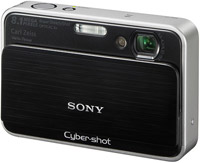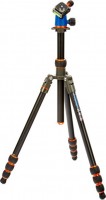Canon Digital IXUS 90 IS
 | Outdated Product $429.00 Sensor size: 1/2.3"; Effective MP number: 10; Focal length: 35-105; Optical zoom: 4; Image stabilization: optical; Macro shooting, from (cm): 3; Viewfinder: is absent; Continuous shooting (fps): 1.4; Screen ("): 3; Memory cards types: SD, SDHC; Power source: battery; Material: steel; Dimensions (mm): 92x57x21 |
Canon Digital IXUS 90 IS
Panel:1/2.3", 10 MPix
Focal length:35-105 mm
Lens aperture:f/2.8-f/4.9
Snapshot size:3648x2736 px
ISO range:80-1600
Burst shooting:1.4 fps
Screen:3 ''
All specifications
Specifications Digital IXUS 90 IS
|
| ||||||||||||||||||||||||||||||||||||||||||||||||||||||||||||||||||||||||||||||||||||||||||||||||||||||||||||||||||||||||||||||||||||||||||
The information in the model description is for reference purposes.
Always clarify the specifications and configuration of the product with the online store manager before purchasing.
Catalog Canon 2025 - new arrivals, bestsellers, and the most relevant models Canon.
Always clarify the specifications and configuration of the product with the online store manager before purchasing.
Catalog Canon 2025 - new arrivals, bestsellers, and the most relevant models Canon.
Video reviews
Focus:
DIGIC III processor
Canon's DIGIC III image processor manages all key camera functions for maximum efficiency. Advanced image processing algorithms ensure the reproduction of the finest details and shades, as well as accurate white balance. The high processing speed results in exceptional camera sensitivity, fast autofocus and long continuous shooting times. The DIGIC III processor also powers advanced noise reduction technology and face detection technology.
Face recognition technology
This feature automatically detects up to nine human faces in the frame and then adjusts the focus, exposure, flash, and white balance for optimal results. The technology is able to highlight the faces that the photographer wants to capture, and if the photo is a group, AiAF 9-point intelligent autofocus is activated. Red-eye reduction technology and face detection technology can help you to remove red-eye while shooting or viewing images.
Motion detection technologies
Motion Detection Technologies Canon uses several methods to detect subject movement or camera shake in order to correctly set the exposure. The brightness of the object and background, the movement of the object (based on comparison of scenes over time), face detection data, and camera shake data from the optical image stabilizer (IS) sensor are processed. When motion is detected, the camera automatically sets the sensitivity to ISO 80-800 to capture a picture with minimal noise and blur.
iSAPS Technology
iSAPS (Intelligent Scene Analysis Based on Photographic Space Data) automatically optimizes all camera settings before each shot is taken. Each scene is analyzed and correlated with photographic space data, the camera's vast library of photographic data. This allows the camera to optimize autoexposure, autofocus, and auto white balance before shooting.
Optical Image Stabilizer
The Image Stabilizer used in the Digital IXUS 90 IS with a movable corrective lens group effectively detects and compensates for camera shake that can cause image blur. Miniature gyro sensors detect camera vibrations caused by hand shake. These signals — up to 4,000 per second — are processed by an image stabilizer chip that distinguishes vibrations caused by hand shake from intentional camera movement. These signals are then sent to the image stabilizer unit, which shifts the lens elements accordingly to correct light rays and eliminate the effects caused by hand shake. To improve accuracy and sensitivity, the moving elements of the lens are supported by miniature ceramic spheres. In addition to reducing vibration, the use of ceramic spheres avoids the problems associated with metal elements, such as increased thermal conductivity and magnetic properties. Optical Image Stabilizer allows photographers to shoot at shutter speeds up to three stops slower for better quality photos.
- 9-Point Intelligent AF (Face Detection Technology)
- 1-point AF (fixed centre or selected face)
- Focus lock
- AF assist beam
- Selecting an AF point by size
- Flash modes:
- Auto
- Forced operation
- Flash off
- Low speed sync function
- Red-eye reduction function
- Face Detection for Flash AE Correction
- Flash exposure lock
- Auto, Manual, Digital Macro, Colour Accent Mode, Colour Swap Mode, Panorama Mode, Video Clip Recording Mode, Special Scenes (Portrait, Night Scene, Children & Animals, Indoor Scene, Sunset, Foliage, Snow, Beach, Fireworks, Aquarium , underwater, ISO 3200)
- My Colours: Off, Vivid, Neutral, Sepia, Black & White, Positive Film, Lighten Skin Tone, Darken Skin Tone, Vivid Blue, Vivid Green, Vivid Red, Custom
- Shooting methods:
- Frame-by-frame
- Continuous (1.4 fps and until memory card is full)
- Self-timer (with a delay of 2 or 10 seconds)
- Red-eye removal function
- Approximately 330 shots
- Approximately 420 minutes of playback
- English, German, French, Dutch, Danish, Finnish, Italian, Norwegian, Swedish, Spanish, Simplified Chinese, Chinese (Traditional), Japanese, Russian, Portuguese, Korean, Greek, Polish, Czech, Hungarian, Turkish, Thai, Arabic, Ukrainian, Romanian
DIGIC III processor
Canon's DIGIC III image processor manages all key camera functions for maximum efficiency. Advanced image processing algorithms ensure the reproduction of the finest details and shades, as well as accurate white balance. The high processing speed results in exceptional camera sensitivity, fast autofocus and long continuous shooting times. The DIGIC III processor also powers advanced noise reduction technology and face detection technology.
Face recognition technology
This feature automatically detects up to nine human faces in the frame and then adjusts the focus, exposure, flash, and white balance for optimal results. The technology is able to highlight the faces that the photographer wants to capture, and if the photo is a group, AiAF 9-point intelligent autofocus is activated. Red-eye reduction technology and face detection technology can help you to remove red-eye while shooting or viewing images.
Motion detection technologies
Motion Detection Technologies Canon uses several methods to detect subject movement or camera shake in order to correctly set the exposure. The brightness of the object and background, the movement of the object (based on comparison of scenes over time), face detection data, and camera shake data from the optical image stabilizer (IS) sensor are processed. When motion is detected, the camera automatically sets the sensitivity to ISO 80-800 to capture a picture with minimal noise and blur.
iSAPS Technology
iSAPS (Intelligent Scene Analysis Based on Photographic Space Data) automatically optimizes all camera settings before each shot is taken. Each scene is analyzed and correlated with photographic space data, the camera's vast library of photographic data. This allows the camera to optimize autoexposure, autofocus, and auto white balance before shooting.
Optical Image Stabilizer
The Image Stabilizer used in the Digital IXUS 90 IS with a movable corrective lens group effectively detects and compensates for camera shake that can cause image blur. Miniature gyro sensors detect camera vibrations caused by hand shake. These signals — up to 4,000 per second — are processed by an image stabilizer chip that distinguishes vibrations caused by hand shake from intentional camera movement. These signals are then sent to the image stabilizer unit, which shifts the lens elements accordingly to correct light rays and eliminate the effects caused by hand shake. To improve accuracy and sensitivity, the moving elements of the lens are supported by miniature ceramic spheres. In addition to reducing vibration, the use of ceramic spheres avoids the problems associated with metal elements, such as increased thermal conductivity and magnetic properties. Optical Image Stabilizer allows photographers to shoot at shutter speeds up to three stops slower for better quality photos.





































